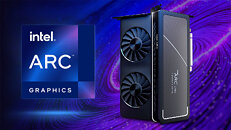
NVIDIA Launches DLSS 4 Plugin for Unreal Engine 5.6
NVIDIA has released its DLSS 4 plugin for Unreal Engine 5.6, allowing developers to incorporate the company's most advanced upscaling and AI-driven frame generation tools into their projects. With this update, performance improvements introduced in UE 5.6, such as optimized memory handling and refined rendering pipelines, receive the benefits of Transformer-based upscaling, which significantly lowers VRAM usage while generating extra frames to improve motion smoothness. Developers using Unreal Engine 5.6 can now integrate multi-frame generation, ray reconstruction, deep learning anti-aliasing, and super resolution in one convenient package that requires fewer resources than earlier DLSS versions.
The DLSS 4 plugin relies on a Transformer neural network that evaluates the relationships among all pixels in a frame rather than using localized convolutional filters. This technique reduces video memory requirements by approximately 15-20% compared with the prior DLSS 3 SDK, freeing up capacity for higher-resolution textures and more detailed environments. Multi-frame generation predicts intermediate frames based on recent frame history, effectively boosting perceived frame rates without additional GPU draw calls. Ray reconstruction enhances reflections and global illumination by learning from high‑quality offline renders, delivering realistic lighting with minimal performance loss. Early feedback indicates a 30-50% uplift in ray-traced effects quality in GPU-bound scenes, as well as noticeably sharper visuals under dynamic lighting. The plugin supports Unreal Engine versions 5.2 through 5.6; however, only projects running on version 5.6 can access the full suite of improvements.
The DLSS 4 plugin relies on a Transformer neural network that evaluates the relationships among all pixels in a frame rather than using localized convolutional filters. This technique reduces video memory requirements by approximately 15-20% compared with the prior DLSS 3 SDK, freeing up capacity for higher-resolution textures and more detailed environments. Multi-frame generation predicts intermediate frames based on recent frame history, effectively boosting perceived frame rates without additional GPU draw calls. Ray reconstruction enhances reflections and global illumination by learning from high‑quality offline renders, delivering realistic lighting with minimal performance loss. Early feedback indicates a 30-50% uplift in ray-traced effects quality in GPU-bound scenes, as well as noticeably sharper visuals under dynamic lighting. The plugin supports Unreal Engine versions 5.2 through 5.6; however, only projects running on version 5.6 can access the full suite of improvements.


































































